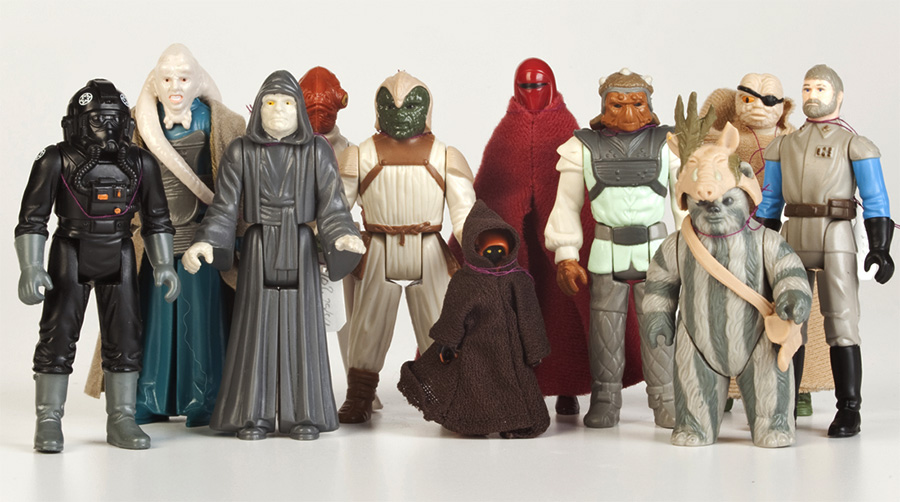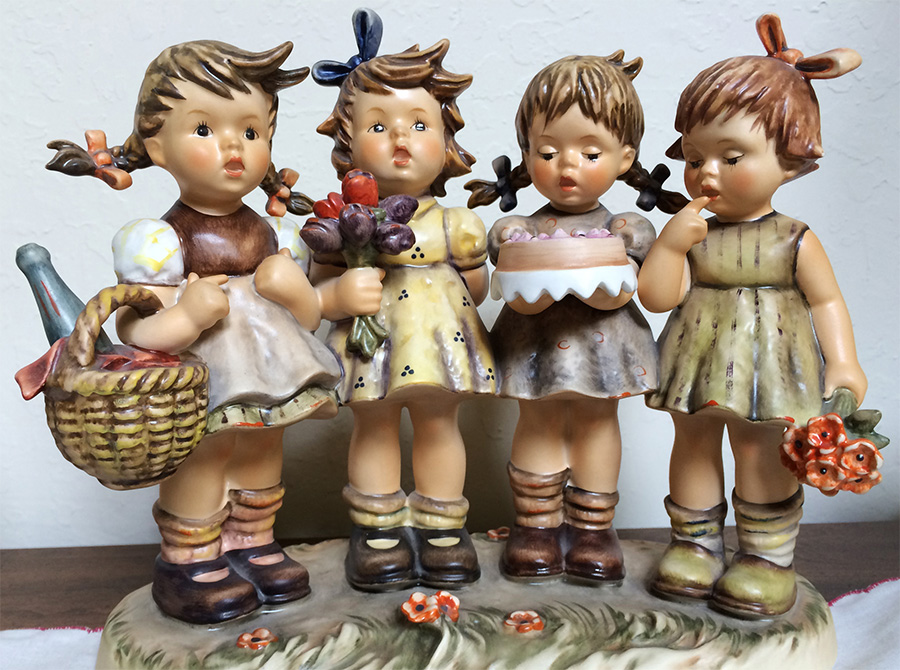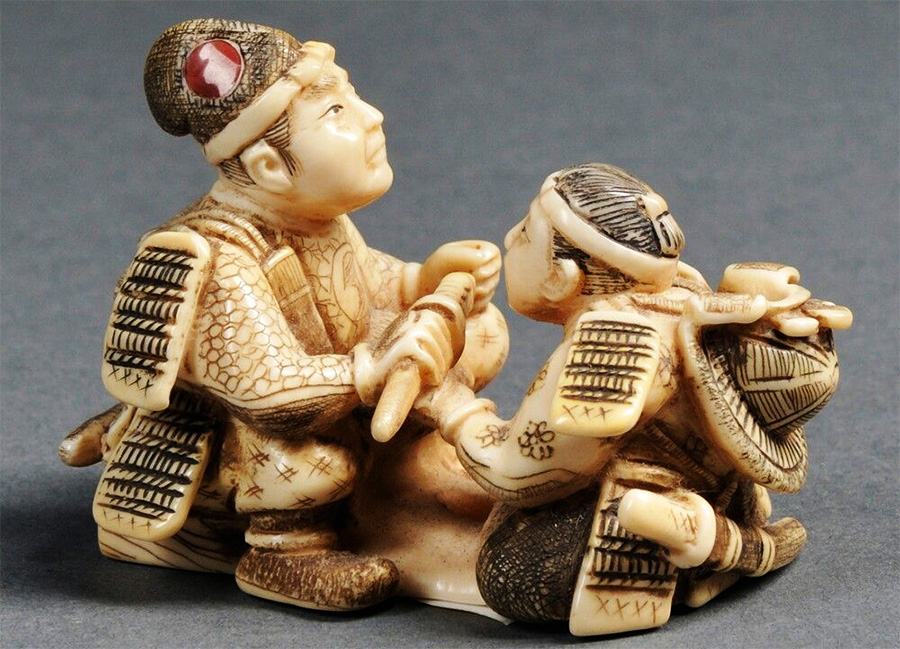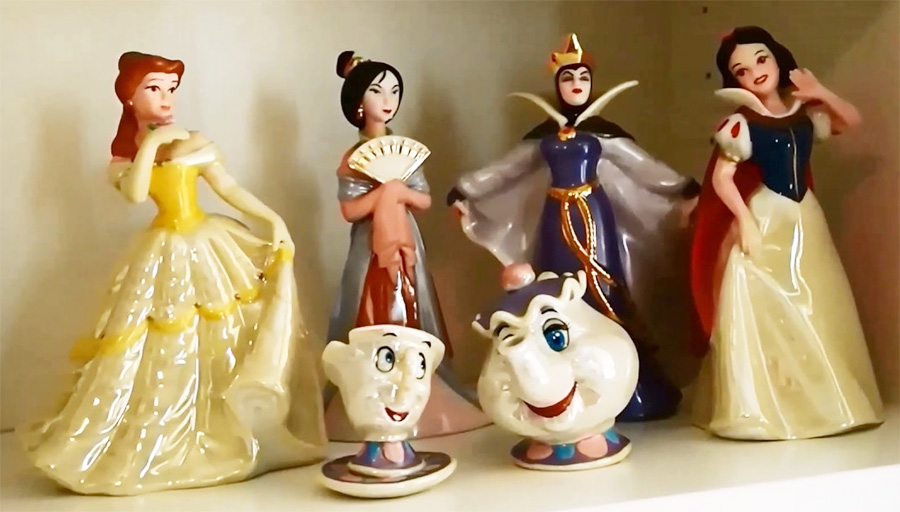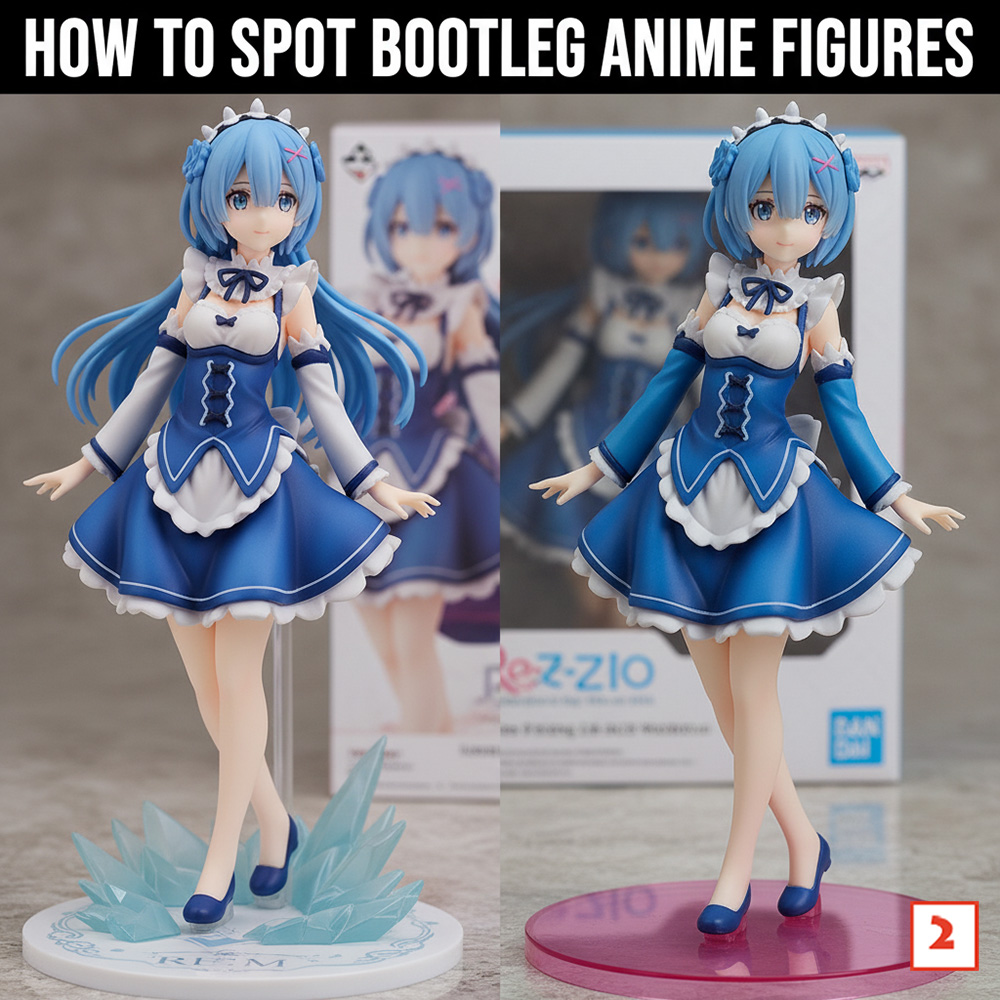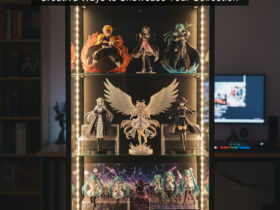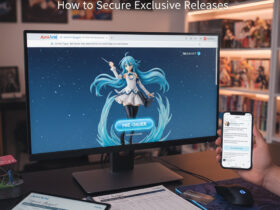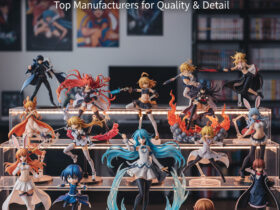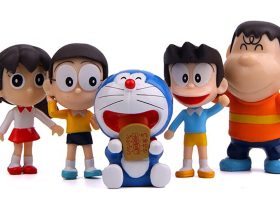There are few moments in the life of a collector more exciting than the arrival of a new figure. The careful unboxing, the admiration of the craftsmanship, and the satisfaction of placing a beloved character on your shelf is a unique joy. But imagine that excitement curdling into disappointment as you realize the figure in your hands is a cheap, shoddy imitation—a bootleg.
The market for counterfeit anime figures is a pervasive and unfortunate reality of the hobby. These illegal knock-offs prey on unsuspecting newcomers and bargain-hunters, flooding online marketplaces with poor-quality copies of official products. Learning to distinguish these fakes from the genuine article is one of the most crucial skills a collector can develop. It’s the key to protecting your investment, ensuring your collection is filled with valuable art pieces, and supporting the creators who pour their passion into this industry.
This comprehensive guide will arm you with the knowledge you need. We will break down the telltale signs of a counterfeit, from the listing to the box to the figure itself, providing you with a complete checklist to confidently identify and avoid bootlegs.
What is a Bootleg and Why Does It Matter?
A bootleg, or counterfeit, anime figure is an unauthorized, illegally produced copy of an officially licensed product. Think of it as art theft. A manufacturer like Good Smile Company or Alter invests enormous resources into licensing a character, hiring talented sculptors and painters, and maintaining strict quality control. Bootleggers steal this design, produce it using inferior methods and materials, and sell it for a fraction of the price.
Here’s why you should care deeply about avoiding them:
- Abysmal Quality: Bootlegs are infamous for their terrible quality. They are often made from cheap, brittle plastic that can warp or even feel sticky to the touch. The sculpting is soft and lacks detail, the paint is sloppy and inaccurate, and parts often don’t fit together correctly. It’s the difference between a work of art and a cheap toy.
- Zero Collector Value: An authentic figure from a reputable brand is an investment that often holds or even increases its value over time. A bootleg is worthless. It has no resale value in the legitimate collecting community and is considered a black mark on a collection.
- Harm to the Industry: Every dollar spent on a counterfeit is a dollar stolen from the legitimate creators. This money is taken away from the very companies, artists, sculptors, and painters who make this hobby possible. Supporting bootleggers directly undermines the industry you love.
- Potential Health Risks: Official figures are made with regulated, high-quality PVC and ABS plastics and non-toxic paints. Bootlegs are produced in unregulated factories with no oversight. The materials used could potentially contain harmful substances that you don’t want in your home.
The Source: Where Do Fakes Come From?
The vast majority of counterfeit figures originate from factories in mainland China. These operations leverage the country’s massive manufacturing infrastructure and often exploit lax intellectual property enforcement. They acquire designs in several ways: by stealing digital sculpts, using rejected parts from official factories, or, most commonly, by “recasting.” Recasting involves taking an authentic figure, creating a new mold from it, and then mass-producing copies. This process is inherently flawed and results in a significant loss of detail, which is why bootlegs always look like a “softer,” less-defined version of the original.
These fakes are then distributed globally through online marketplaces with low oversight, such as eBay, AliExpress, Wish, and third-party sellers on Amazon. They thrive by using deceptive listings and stolen promotional photos to lure in buyers.
The Collector’s Checklist: Spotting a Bootleg BEFORE You Buy
Your best defense is a good offense. Identifying a fake before you spend any money is the goal. Scrutinize every listing with this checklist in mind.
1. The Price is Too Good to Be True
This is the number one red flag. High-quality scale figures are expensive to produce and have a relatively standard market price.
- A 1/7 scale figure from a top brand like Alter or Max Factory typically retails for $150-$250 USD or more. If you see a listing for a brand new one selling for $30, it is 100% a bootleg.
- Nendoroids from Good Smile Company usually retail for $45-$65. Listings for new Nendoroids at $15-$20 are guaranteed fakes.
- “China Version” is the Code: Sellers of bootlegs will often use the term “China Version” in the title or description. This is a universally understood euphemism for “counterfeit.” There is no such thing as a legitimate “China Version” that is drastically cheaper than the “Japan Version.”
2. Scrutinize the Seller and Listing
The context of the sale is just as important as the item itself.
- Seller Location: Be extremely cautious of sellers shipping brand new, recently released Japanese figures directly from mainland China. While some legitimate businesses operate there, it is the primary hub for counterfeit distribution. The risk is substantially higher.
- Stock Photos vs. Actual Photos: Bootleggers almost always use the official, beautiful promotional images stolen directly from the manufacturer’s website. If the price is suspiciously low, you are not buying the figure in the photo. Always ask the seller for photos of the actual item in their possession, including the box. If they refuse or make excuses, walk away.
- Vague or Generic Descriptions: Official listings will name the manufacturer (e.g., “Good Smile Company Nendoroid Hatsune Miku 2.0”). Bootleg listings are often vague (e.g., “Cute Vocaloid Miku Action Figure Toy”). They avoid using official brand names to evade automated counterfeit detection systems.
- Seller Feedback: Check the seller’s reviews, but do so with a critical eye. Look for negative or neutral feedback specifically mentioning “fake,” “bootleg,” “counterfeit,” or “poor quality.” Some scam sellers can build up a decent rating from buyers who don’t know they’ve received a fake.
3. Analyze the Packaging (The Box)
The box is a figure’s birth certificate, and counterfeiters rarely get it right. If you have photos of the box, look for these signs.
- Logos and Copyrights: This is a huge giveaway.
- Check for the official manufacturer’s logo (e.g., Good Smile Company, Alter, Kotobukiya). Bootlegs often have misspelled, blurry, or completely missing logos.
- Look for the official series logo and copyright information (e.g., ©Eiichiro Oda/Shueisha, Toei Animation). Fakes will often omit this entirely.
- Print and Cardboard Quality: A fake box will often look and feel cheap. The colors may be faded and washed out, or conversely, overly saturated and dark. The images and text will be blurry and low-resolution compared to the crisp printing on an authentic box. The cardboard itself is often thin and flimsy.
- Official Seals of Authenticity: Many figures come with an official sticker on the box that proves authenticity. This can be a holographic Toei Animation sticker for Dragon Ball or One Piece figures, a Kadokawa sticker, or a silver Aniplex sticker. While expert counterfeiters can try to replicate these, their versions are usually poor quality and a dead giveaway when compared to the real deal.
- The Window and Blister: The clear plastic window on a fake box might be cloudy, scuffed, or poorly glued in. The internal plastic “blister” that holds the figure and its accessories is a key indicator. On an official product, the blister is sturdy and perfectly molded. On a bootleg, it is often made of incredibly thin, cheap, and flimsy plastic.
The In-Hand Inspection: Telltale Signs on the Figure Itself
Sometimes, despite your best efforts, a bootleg slips through. Or perhaps you’re buying a figure second-hand and want to verify its authenticity in person. Here’s what to look for on the figure.
1. The Paint Job: Sloppy and Lifeless
The quality of the paint is one of the most immediate and obvious differences.
- Sloppy Application: Look for paint bleeding over the lines, especially in detailed areas like the edges of clothing, straps, or the eyes.
- Wrong Finish and Color: Bootlegs often have an unpleasant glossy or oily sheen all over, where the authentic figure would have a clean, matte finish. Colors will be off—either too dull or garishly bright.
- Lack of Detail and Shading: Authentic figures feature subtle airbrushed shading to create depth, such as in the folds of a skirt or strands of hair. Bootlegs lack this artistry, resulting in a flat, cheap, toy-like appearance.
2. The Sculpt and Material: Soft and Deformed
As a result of the recasting process, bootlegs are a pale imitation of the original sculptor’s work.
- Loss of Sharp Detail: This is universal. Sharp, crisp edges become soft and rounded. Intricate patterns are blurred. Hair strands that should be fine and distinct will be melted together into a single blob.
- Leaning and Warping: Cheap PVC plastic cannot support a figure’s weight. Bootlegs will often lean, sag, or warp under their own weight, sometimes even straight out of the box. An authentic figure is engineered to stand perfectly for years.
- Prominent Seam Lines: All figures have mold lines, but on official products, they are minimized, hidden, and sanded down. On bootlegs, these seams are often large, rough, and highly visible across the body or hair.
- The Base: The base is often an afterthought for bootleggers. It might be a plain, colored disc with no text. An official base is usually themed or has the character’s name, series logo, and copyright information printed crisply or molded onto it.
3. The Face: The “Soul” of the Figure
The face is where a bootleg truly falls apart. It’s often the most horrifyingly “off” part of the figure.
- Eyes are Everything: The eyes on a fake will be misshapen, misaligned, or poorly printed. The colors will be wrong, and they will lack the depth and life of the original. This is what leads to the vacant, “derpy” expression infamous among bootlegs.
- Wrong Expression: The entire feel of the character’s expression will be lost. A gentle smile might become a bizarre smirk. A determined battle cry becomes a goofy shout.
4. Joints and Assembly
For posable figures like figmas or Nendoroids, the difference is night and day.
- Poor Fit: Parts will not fit together snugly. Hands won’t stay in wrist pegs, accessories won’t fit in the hands, and the stand peg won’t fit into the figure’s back.
- Fragile or Stiff Joints: The joints will either be terrifyingly stiff and feel like they’re about to snap, or they will be so loose they can’t hold a pose.
Your Ultimate Weapon: Compare with an Official Source
Never rely on memory alone. The single most powerful tool in your anti-bootleg arsenal is a direct, side-by-side comparison.
- MyFigureCollection.net (MFC): This website is an essential resource for every collector. It is a massive user-run database of virtually every anime figure ever released. Search for the figure you’re interested in, and you will find a gallery of official promotional photos. Crucially, in the comments section for popular figures, users will often upload photos of known bootlegs, showing direct comparisons that make the flaws painfully obvious.
- Manufacturer Websites and Reputable Retailers: Go to the source. Look up the figure on the official Good Smile Company, Alter, or Kotobukiya websites, or on a trusted retailer like AmiAmi. Use their high-resolution photos as your definitive reference.
What to Do If You’ve Bought a Bootleg
If you end up with a fake, don’t just accept the loss.
- Contact the Seller: First, message the seller, state that you have received a counterfeit item, and request a full refund.
- File a Claim: If the seller is uncooperative, immediately file a dispute through the platform you used. On eBay, Amazon, or when using PayPal, file a claim for receiving a “counterfeit item” or an “item not as described.”
- Provide Evidence: These platforms’ buyer protection policies heavily favor the buyer in cases of counterfeit goods. Support your claim with clear photos showing the defects you’ve identified—the sloppy paint, the blurry box, and a side-by-side comparison with an official photo from MFC.
- Follow Instructions: The platform will guide you through the process. They will almost always rule in your favor and force a refund.
Collect with Confidence
Learning to spot bootlegs is a rite of passage for every collector. It transforms you from a passive buyer into an informed enthusiast. By keeping this checklist in mind—scrutinizing the price, the seller, the box, the paint, and the sculpt—you build a powerful defense against the counterfeit market.
Always remember to buy from reputable, well-known retailers whenever possible. It’s the simplest way to guarantee authenticity. By being vigilant, you not only protect yourself and your wallet but also cast a vote for the artists and companies that make this hobby so special. You ensure that your collection is a true reflection of your passion—a curated gallery of authentic, beautiful, and valuable works of art.

